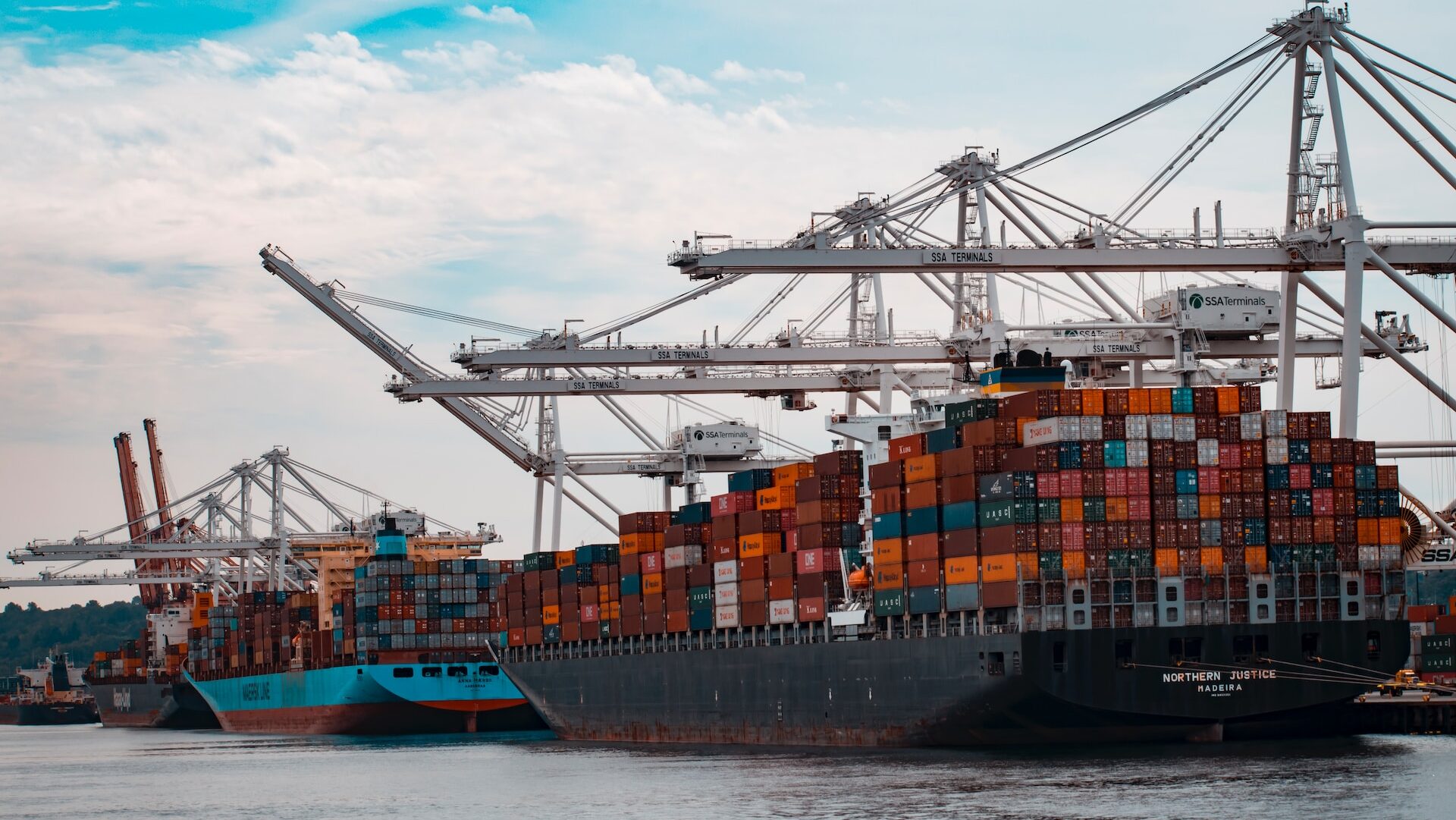On 15 December 2023, Maersk, the world’s largest container shipping company, stopped sending ships through the Red Sea because of threats of attacks by Yemen’s Houthi rebels. Now, the United States and United Kingdom have begun launching a series of airstrikes on Yemen in Houthi-controlled areas. These attacks exemplify what could be a series of geopolitical conflict points around access to straits and vulnerable shipping routes now and in the near future. ‘The world is in for ups and downs in freight rates that no one has seen ever before,’ Bill Wilkening, COO of EFL, one of the largest freight forwarders in the US, told me. ‘This volatility is not going away. The higher it goes, the faster it will crash, and so on. Nations playing the geopolitical game will use these straits for times to come.’
The Suez Canal, which connects the Mediterranean to the Red Sea, accounts for 30% of global container traffic and is an artery for Europe. It has been critical for European hydrocarbon supply after the onset of the war in Ukraine. The Houthis operate at the entrance to the Red Sea, a narrow strait called Bas el Mandeb. The rebels, supported by Iran, have already broken from the rest of the Arab world and backed Hamas. Their attacks on ships have increased since the Gaza conflict began and now pose a serious threat to the fragile global supply chains. Although the rebels joined the war by first attacking Israel, they have recently started targeting international commercial carriers as well. The importance of the Suez Canal for hydrocarbons has increased since the war in Ukraine began. With their gas supply from Russia at risk, Europe was forced to turn to the Middle East for liquified natural gas, and the Suez became even more important. As long as the Ukraine conflict continues, the Suez remains Europe’s main channel for hydrocarbon supply.
Realising the growing influence of the Suez Canal, Egypt increased the canal’s toll fees in 2023 and announced another increase for 2024. Revenues from the canal are crucial for Egypt, and disruption from the Houthi rebels is something they will not tolerate. After all, when Ever Given, one of the largest container ships, got stuck in the Suez Canal last March, it caused around $10 billion worth of freight delays.
On 14 December, Iran warned the US against establishing an even stronger presence in the Suez Canal. Those comments came after the US said they were negotiating to set up a multinational alliance to protect the Suez. Given the current fragile relationship between the Arab world and the US, this flash point has come alive like it has many times before. Egypt’s nationalization of the Suez Canal in 1956 led to military intervention by Western countries, specifically the United Kingdom, France, and Israel. Foreign troops were soon withdrawn, and Egypt’s control over the Suez Canal was internationally recognised, reshaping the power dynamics in the Middle East. As the steward of the Suez, Egypt will likely back whatever benefits the canal. But how will the Arab world react to a joint protection exercise in the Red Sea at a time when the war in Gaza has polarised the world? Every way you look, Europe will be the loser.
While the Red Sea development has short-term implications for inflation, its long-term effects could be far worse. If more carriers avoid the Red Sea because of fear of terror attacks, US importers will switch to air. Air freight is twelve to fifteen times more expensive than ocean, but desperate retailers and tech companies will have no choice. Ships might have to use the Cape of Good Hope, which takes 20 days longer than the Suez for a journey from Asia. Additionally, pirate activity around the African detour makes the trip longer and more unprofitable.
Straits have always made for easy battlegrounds: more than 80% of world trade is through ocean carriers. Besides the Suez Canal, which facilitates Asia–Europe trade, the Panama Canal—crucial for Asia–US trade—has also faced recent difficulties. The Panama Canal connects the Pacific to the Atlantic, saving ships nearly 20 days of sailing time. Although smaller than the Suez Canal, it has one crucial difference. While the Suez Canal is at sea level and its water depth is related to tides, the Panama Canal is rain-fed through the Gatun Lake. In other words, the level of rainfall in the area affects the water level in the Canal. Under El Nino drought and unpredictable weather conditions, the number of containers a ship can carry through the canal can decrease and delay transit times, create backlogs, and disrupt the supply chain. This has been seen recently as the Panama Canal has been reduced to 30 vessels a day—down from its usual 40— because extreme weather conditions have lowered water levels, making heavy ship cargo challenging to navigate.
The Malacca Straits connect the Indian Ocean to the Pacific Ocean and are critical for intra-Asia trade in the South China Sea, the Burma Sea, and the Bay of Bengal. It connects 700 ports worldwide, with 70,000 ships passing through daily. It is the connection between India, China, and Japan. Roughly around 15% of global oil passes through Malacca. PRC’s oil imports from the Middle East and Africa come through Malacca. The strait is so important that President Hu Jintao once called China’s dependency on it the ‘Malacca Dilemma.’ The route is equally important for India, which remains concerned about Chinese presence in the South China Sea. But China sees few other options than to protect its interest by trying to match American and Indian presence along the Straits with its own.
With a perception in the West that Iran, China, Russia, and perhaps the Middle East could align globally in an economic war against the West, shipping routes are back in play as proxies of war. If the conflicts in Gaza and Ukraine continue, global supply chains are likely to remain disrupted.

